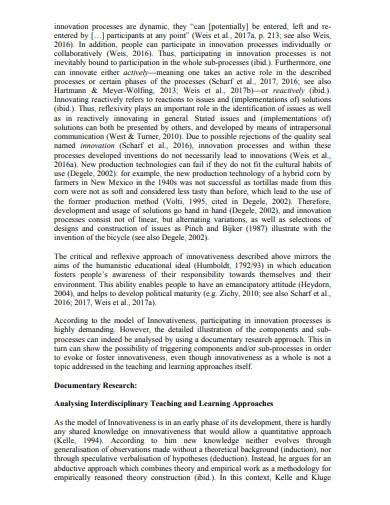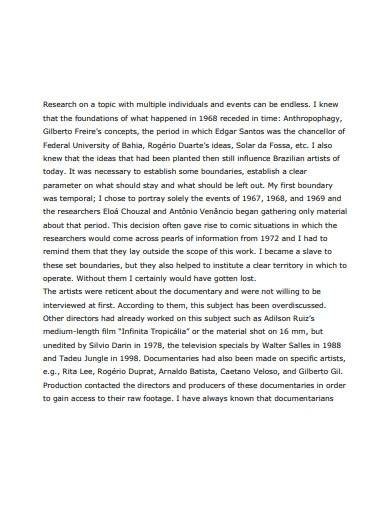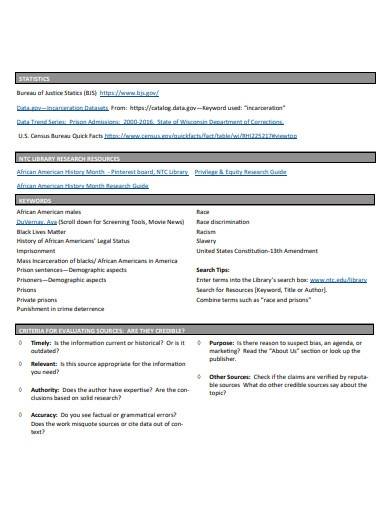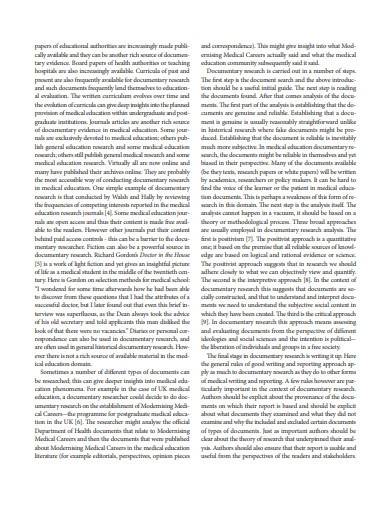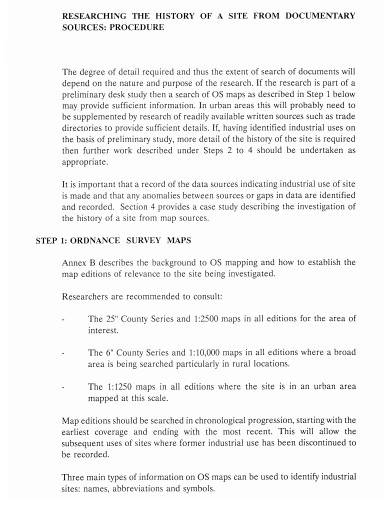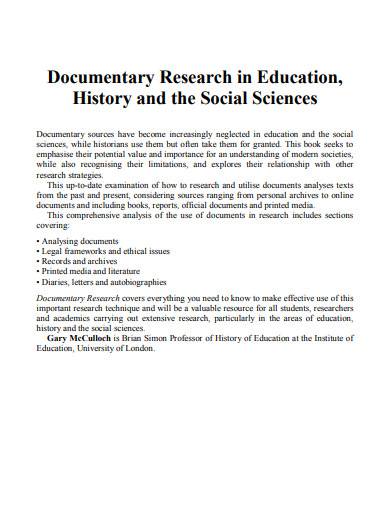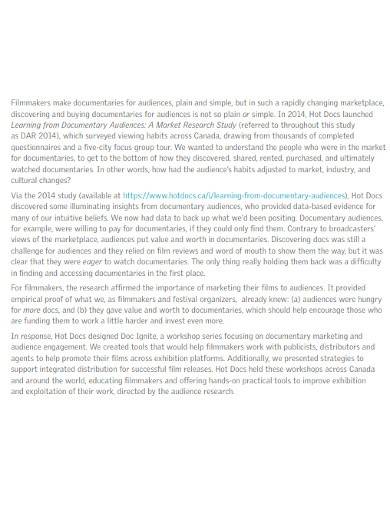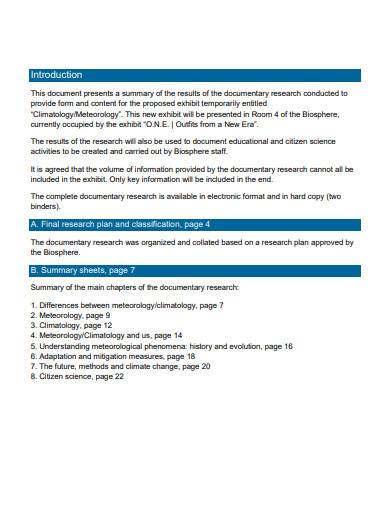The main purpose of documentary research is to collect and interpret information from a wide range of sources to gain a deeper understanding of a subject or phenomenon. It is commonly used in academic research plan, social sciences, history, and other fields to provide empirical evidence and support arguments or theories. Documentary research can involve both primary source analysis and secondary sources. Primary sources are original documents or records created at the time of the event or phenomena being studied, while secondary sources are written or recorded accounts created after the fact. Researchers may use a combination of both primary and secondary sources to gain a more complete understanding of their research topic.
FREE 10+ Documentary Research Samples & Templates
1. Archaeological Documentary Research
2. Teaching Documentary Research
3. Documentary Research Template
4. Documentary Research Sources
5. Documentary Film Research Sample
6. Sample Documentary Research
7. Educational Documentary Research
8. Professional Documentary Research
9. Documentary Research in Education
10. Film Makers Documentary Research
11. Summary of Documentary Research
What is Documentary Research?
Documentary research is a method of gathering information by analyzing existing documents and other sources of written or recorded information. It involves reviewing and synthesizing primary and secondary sources such as book samples, article analysis, sample newspaper template, government reports, archives, and sample access of database to answer research questions or investigate a specific topic.
How To Make Documentary Research?
Documentary research can be conducted through various techniques, such as content analysis, discourse analysis, and textual analysis, among others. It allows researchers to examine multiple perspectives, compare and contrast different viewpoints, and identify patterns and trends in the data. To conduct documentary research, you can follow these general steps:
Step 1- Identify Research Question
Determine what you want to investigate, and develop a clear and precise research question or hypothesis that guides your search for relevant sources of information. Before diving into the primary sources, it is important to conduct a preliminary search to identify and locate potential sources of information. You can use databases, libraries, and archives to find sources relevant to your topic.
Step 2- Collect Analyze Data
Collect data from relevant sources, such as books, articles, archives, government reports, and other publications. Take field notes sample and organize your findings using a coding system, a spreadsheet, or other sample data analysis tools. Analyze the data to identify patterns, themes, and other key findings.
Step 3- Evaluate Quality Sources
Assess the reliability, validity, and accuracy of your sources to ensure that they are credible and trustworthy. You can use established criteria, such as the author’s credentials, the publication date, and the source’s reputation, to evaluate the quality of your sources.
Step 4- Synthesize your Findings
Combine your findings from different sources to develop a comprehensive and nuanced understanding of your topic. You can use various techniques, such as content analysis, discourse analysis, and textual analysis, to analyze and synthesize your data.
What are the advantages of documentary research?
Documentary research allows researchers to analyze a large amount of data quickly and efficiently, gain a broader understanding of the topic being studied, and identify patterns and trends that may not be evident from a single source.
What are the limitations of documentary research?
The limitations of documentary research include the researcher’s limited access to all relevant sources of information or the sources may be incomplete or biased. Additionally, the researcher may be limited by the quality of the sources, such as poorly documented primary sources or unreliable secondary sources.
What are the types of sources used in documentary research?
There are two types of sources used in documentary research: primary sources and secondary sources. Primary sources are original documents or materials that are created at the time of the event or phenomenon being studied, such as diary samples, letter samples, photographs, videos, and official records. Secondary sources are materials that are created after the event or phenomenon being studied, and include books, articles, and other publications.
In conclusion, documentary research is a valuable method of inquiry that allows researchers to gain a deeper understanding of a specific topic or phenomenon. It involves analyzing and synthesizing data from primary and secondary sources, and can provide insights into historical, social, and cultural contexts. While documentary research has some limitations, it has been used successfully in a wide range of academic fields and can be a powerful tool for researchers seeking to understand complex phenomena.
Related Posts
FREE 10+ Content Validity Samples & Templates in PDF
FREE 10+ Construct Validity Samples & Templates in MS Word | PDF
FREE 10+ Code of Human Research Ethics Samples & Templates in MS Word | PDF
FREE 10+ Biography Research Report Samples and Templates in PDF
FREE 10+ System Documentation Samples & Templates in MS Word | PDF
FREE 10+ Process Document Samples & Templates in MS Word | PDF
FREE 10+ Action Research Samples & Templates in PDF
FREE 10+ Longitudinal Research Samples & Templates in PDF | MS Word
FREE 10+ Causal Research Samples & Templates in MS Word | PDF
FREE 10+ Client Discovery Samples & Templates in MS Word | PDF
FREE 10+ Null Hypothesis Samples & Templates in MS Word | PDF
FREE 9+ Product Knowledge Samples & Templates in PDF
FREE 10+ Software Documentation Samples & Templates in MS Word | PDF
FREE 10+ Exploratory Research Samples & Templates in PDF | MS Word
FREE 10+ Experimental Research Samples & Templates in MS Word | PDF


